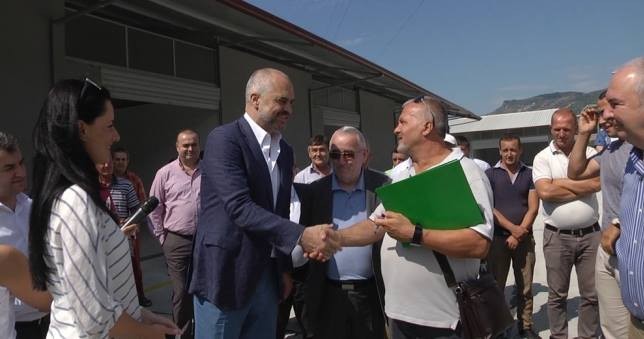
April 2015—Without investments, Albanian farmers and agribusinesses have very little chance of expanding into modern and sustainable commercial enterprises able to compete in the European market. About half of Albania's workforce is active in agriculture, and 20 percent of its economy relies on agriculture production and trade. However, it has been very difficult for agribusinesses to access capital.
To tackle this issue, in September 2012, at a time when only 2 percent of lending went to the sector, USAID signed co-guarantee agreements covering a $15 million portfolio with ProCredit and BKT banks to promote lending in agriculture.
A year later, USAID began supporting a project designed to bridge the gap between farmers and finance. The project, entitled AgroCapital, works with farmers and financial institutions to lower costs of finance, ease constraints, and facilitate increased investments to create jobs and increase value-added agricultural services in Albania. AgroCapital also works closely with the Ministry of Agriculture and the European Union (EU) agriculture support program to suggest practical ways to streamline the application process so it works better for both the EU and beneficiaries.
“We realized that, while the EU focused very much on documentation requirements, they didn't have any focus on building capacities so that Albanians would actually be able to access their grant resources,” said Enio Jaco, director of USAID's AgroCapital project. “We're filling a gap and helping Albanians access resources that would otherwise be lost to them.”
In 2014, bank lending to agriculture doubled as a percentage from 2012, to 4 percent. While this increase is modest compared to investment needs, as banks and other financial institutions learn that loans in the agriculture sector are actually safer than in other sectors, the result is growth in lending. Several banks now are active in agriculture as opposed to only one in 2012.
Since 2012, USAID has leveraged over $14 million for productive agricultural investments, at a ratio of about 13-to-1. More importantly, USAID, working with the private sector, has demonstrated that investing in agriculture is viable and rewarding for farmers, financial institutions and the economy as a whole.
The three-year AgroCapital project, which runs until 2017, is implemented by Creative Business Solutions.
LINKS







Comment
Make a general inquiry or suggest an improvement.